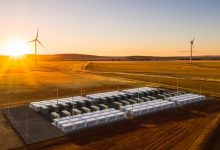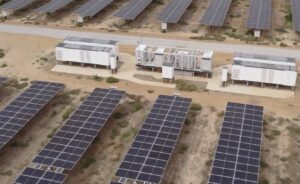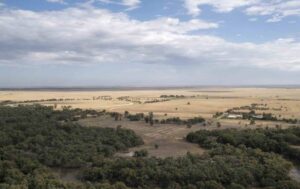The Tesla big battery in South Australia has delivered a handsome profit in its first full year of operation in South Australia for owners Neoen Australia, as well as playing a key role in lowering market costs and keeping the lights on.
The 100MW/129MWh battery – still the biggest lithium-ion battery in the world, but officially known as the Hornsdale Power Reserve – cost around $96 million to build but pulled in revenue of €18 million ($A29 million) in 2018 (as we reported in February).
It now emerges that the profit from the operation (earnings before interest, depreciation, and tax) was €14.2 million for 2018 ($A22.8 million at current exchange rates), adding on to to €0.4 million of earnings from the single month of operation in 2017.
(Update: See latest report showing Tesla big battery delivered a 20 per cent lift in first quarter revenue in 2019).
Neoen also pulled in €32 million profit from its solar operations in Australia – primarily the Griffith, Parkes and Dubbo solar farms, the Degrussa solar park and the newly complete Coleambally solar farm – and €68.8 million from its wind farm operations (mostly Hornsdale).
Neoen also notes it received €7.1 million in compensation from the delayed commissioning of the solar farms – some of many solar projects that have suffered delays in the past year due to tightening connection procedures.
The success of the tesla big battery is not a surprise. Neoen notes in its full year accounts that it is performing ahead of expectations.
A report by Aurecon last December, said the battery had helped slash $40 million from the costs of providing frequency support to steady the grid.
Indeed, the arrival of the battery has meant that the grid operator has been able to remove a key market constraint that was constantly gamed by the state’s gas generators.
The battery plays a key role in AEMO’s armoury to protect the grid, and its role in keeping the lights on in South Australia during a major network event in August – when more than 1GW of load was lost in other states – was highlighted by the market operator in a recent report.
The success of the Tesla battery has resulted in a flurry of new battery investments – including the Gannawarra, Ballarat and Dalrymple North batteries, which are already fully commissioned.
More batteries at Lake Bonney, Lincoln Gap and Kennedy wind farm are being built, or in the commissioning phase, while Neoen is also teaming up with Tesla again for the 20MW/34MWh battery next to the Bulgana wind farm, which will provide 100 per cent renewable power to a new glasshouse to be built by Nectar Farms.
Neoen also began construction on the Azur storage plant in France (6 MW/6 MWh).
Other notable observations in Neoen’s annual accounts include curtailment issues, which it says impacts production by 1.3 per cent on average for solar and 5 per cent for wind.
“Note that curtailment periods are also times during which the (Hornsdale) battery is more profitable, which partially offsets losses of income,” it noted.
Revenue increases also came from newly complete solar farm in 2018, which included Coleambally (189 MWp/+€10.0 million), Parkes (66 MWp/+€5.6 million), Dubbo (29 MWp/+€3.2 million) and Griffith (36 MWp/+€3.1 million).
However, those figures do not represent full year revenues as the plants were completed at various points in the year.








